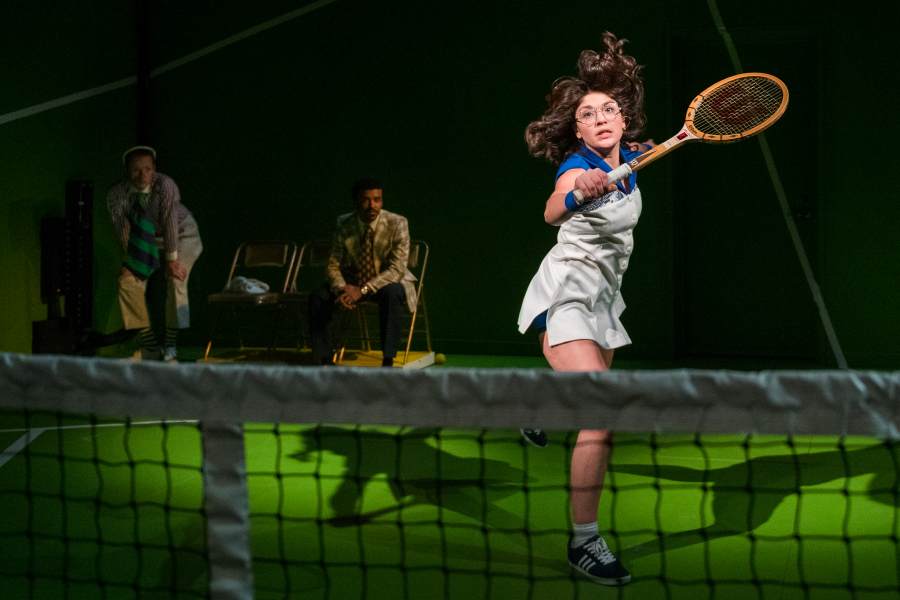

Gender inequality is at the center of the public conversation like never before, and with movements like #MeToo and the Women’s March constantly gaining popularity and news headlines, it should also be said: it was about damn time! The battle of the sexes has inspired the imagination of playwrights, artists, and storytellers for as long as there have been stories to tell, and with reason: take two polar opposites in physical and sociopolitical terms and you have a bomb waiting to explode. In September 1973 when bullying buffoon Bobby Riggs (Donald Corren) challenged Billie Jean King (Ellen Tamaki) to the tennis match to end all matches, they knew it more than a simple game they were holding a symbolic battle. Their “Battle of the Sexes” wasn’t merely about tennis -- in fact it wasn’t about tennis at all -- but despite knowing the cultural weight of the historical match, playwrights Kevin Armento and Bryony Lavery use it as a heavy-handed metaphor in their play Balls, which hits you on the head with a racket over and over with its constant repetition of its themes.
In fact, it’s the playwrights’ predilection of delivering a theme rather than a thesis that makes the 90-minute play feel as endless as a baseball game. Set during the King-Riggs match, the playwrights use multiple arcs - some of them across time and space - to remind us of the ways in which women have been oppressed by men, and have constantly reminded us why they’re the ones who should actually be in control. But the play fails to turn Riggs and King into flesh and blood characters; rather, we listen to clunky monologues in which King wonders about her place in the world, and abusive commentary from Riggs. Both become stereotypes despite the fine work by Tamaki and Corren.
Perhaps overwhelmed by how many ideas the playwrights tried to cram into their show, directors Ianthe Demos and Nick Flint were left to figure out how to convey all this in a way that would work as a theatrical spectacle and also a political statement. At its best, Balls challenges our vision of space, the theater seems to grow and shrink through Natalie Lomonte's movement direction. There's also an inventive use of a net on wheels, and intense, but graceful, choreography that at one moment makes us believe Billie Jean could fly.
At its worst, the play is so obsessed with delivering its pro-equality message and seeming progressive that it makes what should’ve been a simple, yet complex, allegory become convoluted and confusing. For instance, King’s husband Larry and her lover Marilyn are played by African American actors Danté Jeanfelix and Zakiya Iman Markland respectively. Larry and Marilyn were white in real life, and as much as we should applaud blind casting and diverse ensembles, by suggesting Billie Jean King’s love interests were black, the play adds a strange layer of racism that is never addressed. Jeanfelix doubles, playing other characters, but Markland only plays Marilyn, meaning there was a true purpose in choosing her. Misinformed audience members might leave the theater championing King as a post-racial saint, when in many ways she perpetuated white feminism.
Throughout the show we also learn about other events that were happening in 1973, like the birth of Monica Lewinsky, and the ruling in Roe v. Wade, bits of trivia that add little to the narrative and instead suggest a feeling of in adequateness, as if the play doesn’t feel King vs. Riggs was enough to convey its message of relevance. More often than not Balls is an uncomfortable play to sit through, and not for the right reasons. The authors too often find perverse “humor” in having the gift of knowing more than their characters, such as in a moment when two fans in the bleachers make a joke about Bruce Jenner’s masculinity that lands with a thud. Making fun of trans people was wrong in 1973 and it’s even more wrong in 2018. The characters may not know better, but we do.